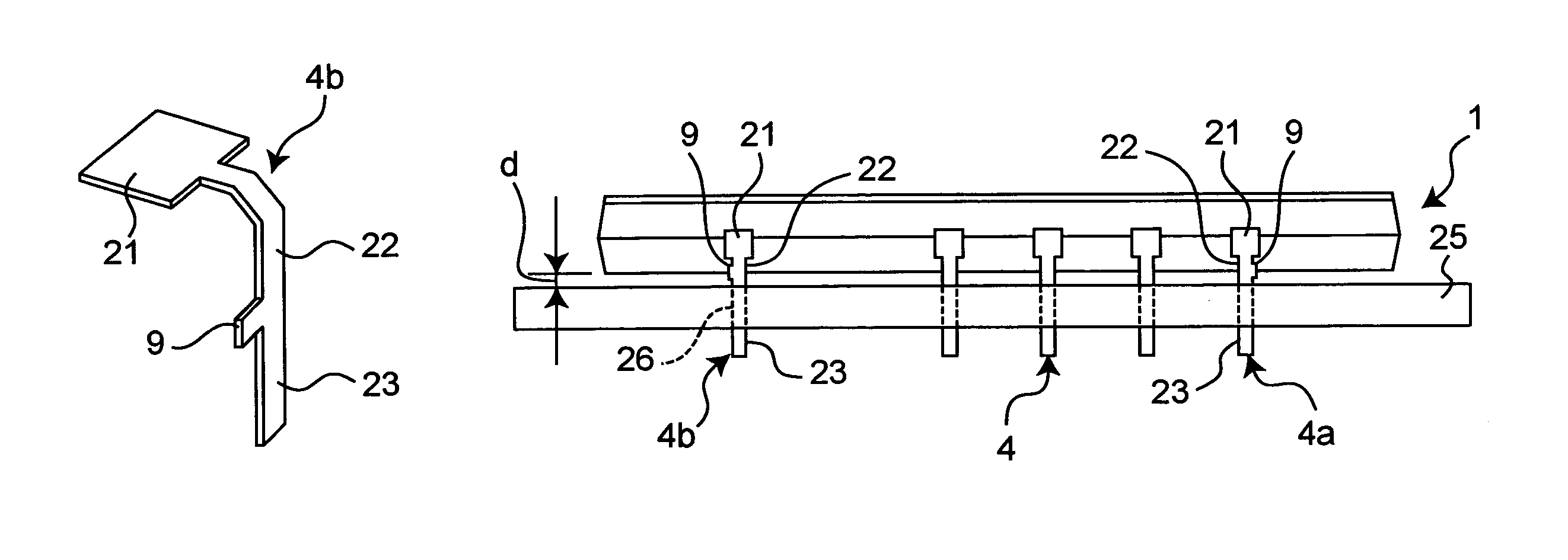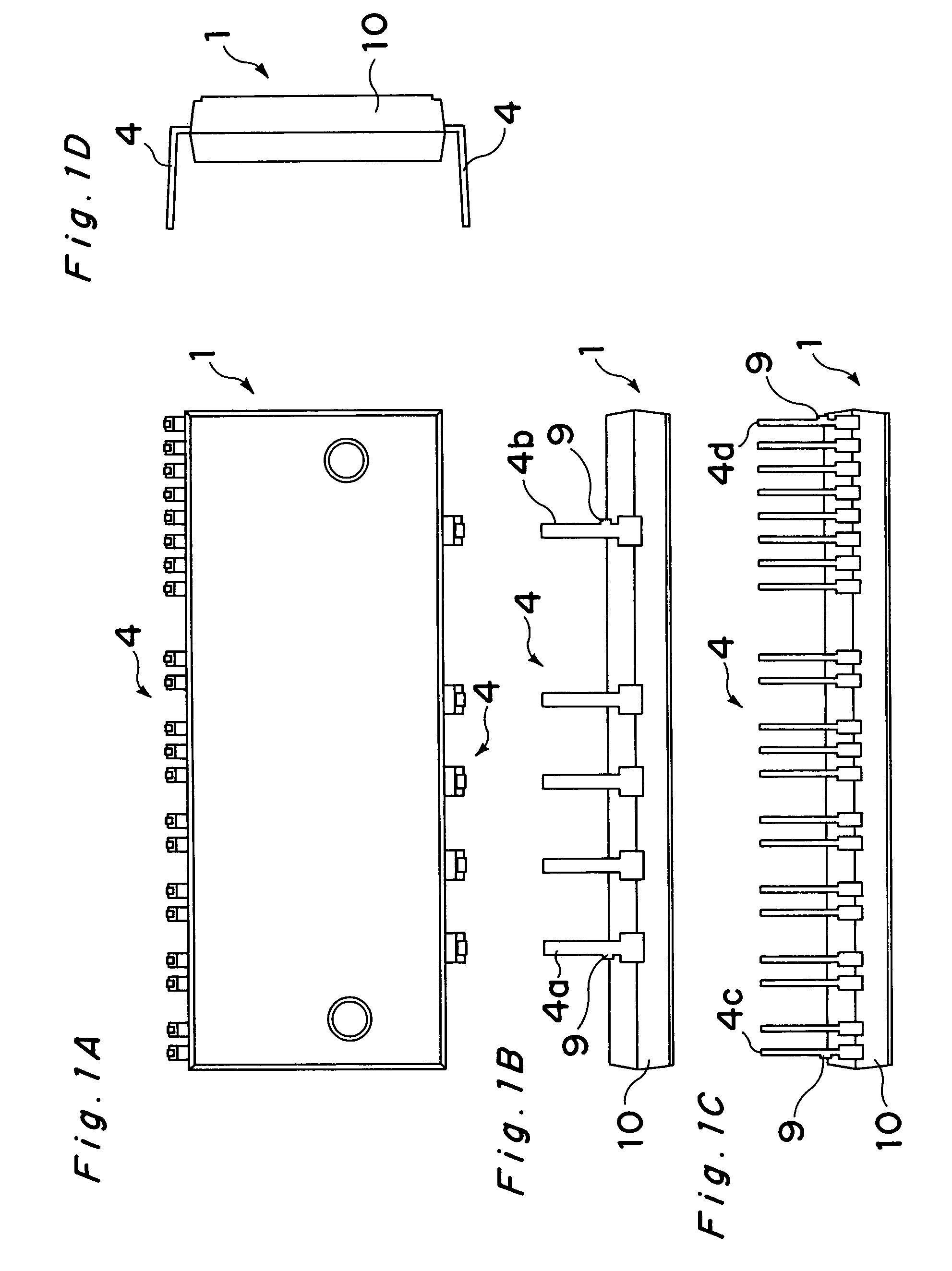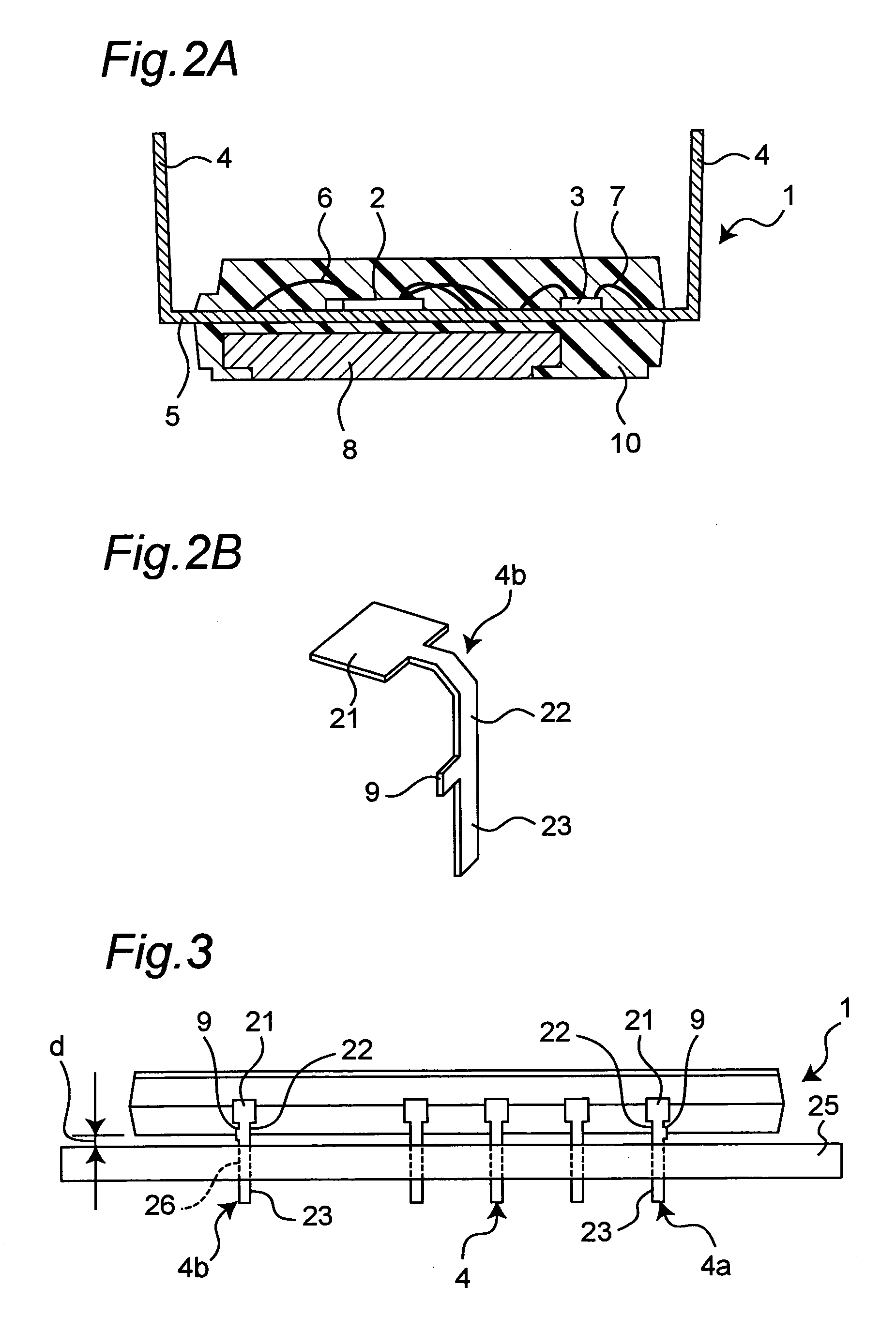Semiconductor device and semiconductor assembly module with a gap-controlling lead structure
- Summary
- Abstract
- Description
- Claims
- Application Information
AI Technical Summary
Benefits of technology
Problems solved by technology
Method used
Image
Examples
embodiment 1
[0049]The embodiment 1 of the present invention will be described below. The semiconductor device of the embodiment 1 is a package-type large DIP corresponding to static electricity.
[0050]FIGS. 1A–1D are a top view, front view, rear view and side view of the semiconductor device of the embodiment 1, respectively. FIG. 2A is a side sectional view of the semiconductor device while FIG. 2B is an enlarged perspective view of one end lead of the semiconductor device. FIG. 3 is a front view showing a state in which the semiconductor device is mounted on a substrate. The semiconductor device shown in FIGS. 1A–1D to FIG. 3 is a so-called semiconductor device of an insertion-mount-type or an insertion-mount-type semiconductor device.
[0051]As shown in FIGS. 1A–1D to FIG. 3, in the semiconductor device of the embodiment 1, a power semiconductor element 2 and a control semiconductor element 3 are mounted on a copper lead frame 5 provided with a plurality of leads 4. Both of the semiconductor el...
embodiment 2
[0071]The embodiment 2 of the present invention will be described below by referring to FIGS. 8A and 8B toFIG. 10. The semiconductor device of the embodiment 2 has many points common to those of the embodiment 1 shown in FIGS. 1A–1D to FIG. 7. Therefore, to avoid duplication of description, points of the embodiment 2 different from those of the embodiment 1 are mainly described below. In FIGS. 8A and 8B to FIG. 10, a member common to that of the embodiment 1 shown in FIGS. 1A–1D to FIG. 7 is provided with the same reference number. Though a case is described below in which the shape of the gap-controlling portion 9 is rectangular, the shape is not restricted to a rectangle. A square, trapezoidal, or triangular shape is allowed as long as the shape can control a gap.
[0072]FIG. 8A is a front view of a semiconductor device of the embodiment 2. FIG. 8B is an enlarged perspective view of an end lead of the semiconductor device. The semiconductor device shown in FIGS. 8A and 8B is an inse...
embodiment 3
[0080]The embodiment 3 of the present invention will be described below by referring to FIGS. 11A–11C to FIG. 13. A semiconductor device of the embodiment 3 has many points common to the semiconductor device of the embodiment 1 shown in FIGS. 1A–1D to FIG. 7. Therefore, to avoid duplication of description, points different from those of the embodiment 1 are mainly described below. In FIGS. 11A–11C to FIG. 13, a member common to that of the embodiment 1 shown in FIGS. 1A–1D to FIG. 7 is provided with the same reference number.
[0081]FIG. 11A is a front view of a semiconductor device of the embodiment 3. FIG. 11B is an enlarged perspective view showing one end lead of the semiconductor device. FIG. 11C is a perspective view showing a modification of an end lead. The semiconductor device shown in FIGS. 11A–11C is an insertion-mount-type semiconductor device.
[0082]As shown in FIGS. 11A–11C, in the case of the semiconductor device 1 of the embodiment 3, a gap-controlling portion 9 formed ...
PUM
 Login to View More
Login to View More Abstract
Description
Claims
Application Information
 Login to View More
Login to View More - R&D
- Intellectual Property
- Life Sciences
- Materials
- Tech Scout
- Unparalleled Data Quality
- Higher Quality Content
- 60% Fewer Hallucinations
Browse by: Latest US Patents, China's latest patents, Technical Efficacy Thesaurus, Application Domain, Technology Topic, Popular Technical Reports.
© 2025 PatSnap. All rights reserved.Legal|Privacy policy|Modern Slavery Act Transparency Statement|Sitemap|About US| Contact US: help@patsnap.com



